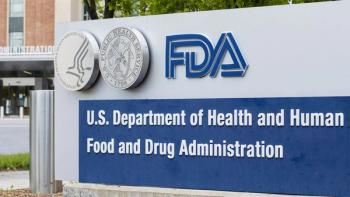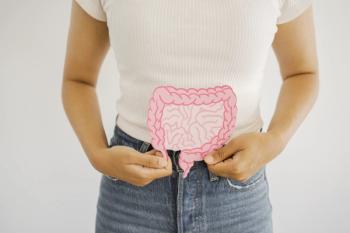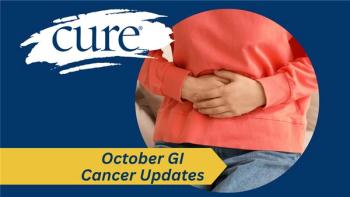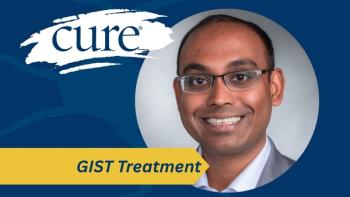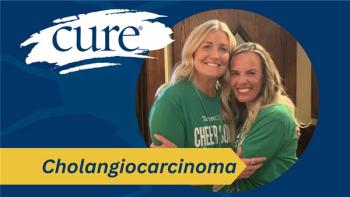
- Winter 2020
- Volume 19
- Issue 1
Surviving Hereditary Stomach Cancer Involves an Effort by the Whole Family
In an effort to combat hereditary stomach cancer, it takes the entire family to help understand what it takes.
At a very young age, I knew I faced a high risk of breast cancer. My mom had it, as did her mother and three of her four sisters. My OB-GYN was interested in doing a family genetic test when I was in my 20s; however, we needed three living generations and my grandmother had died eight years before I was born. Instead, I started getting mammograms at age 35.
When I reached my 40s, a new issue trumped my concern about breast cancer: My oldest brother and cousin were diagnosed with stomach cancer six months apart.
My brother, Tom, started the genetic testing that found a mutation of the CDH1 gene. Everyone has this gene, but if it’s mutated, it means you have hereditary diffuse gastric cancer syndrome. Some of the mutations that cause this syndrome are also linked with lobular breast, prostate and colorectal cancers. I had my answer about why there were so many breast cancer cases in my family.
I faced the question of whether to have genetic testing done. By this time, I had watched Tom begin his battle against stage 3 stomach cancer. Fourteen years my senior, my big brother had always seemed indestructible in my eyes, but chemotherapy and radiation had made him weak and tired. He had experienced heartburn and lost a lot of weight before receiving his diagnosis and continued to lose weight post-surgery.
I did not want to fear stomach cancer every time I burped or lost a few pounds, so I decided to be tested and meet with the genetic counselor the rest of my family was using. Because you get your genes from your parents, I had a 50/50 chance of having the mutation that was on my mother’s side. While I waited, I got increasingly nervous. My other brother and two cousins got their results back, and all were positive for the mutation. Then my results came in: positive. I was told that meant I had up to an 83% risk of getting the stomach cancer that was stealing my brother from us. What was I to do with that information? I was 41 years old with two active school-age children.
I basically had two choices. The first involved lifelong endoscopies with biopsies. This cancer does not form masses, so it is hard to see by scope. Doctors need to take a biopsy and hope it targets an area that is affected. The second choice was a total gastrectomy — surgery that removes the stomach and connects the esophagus to the lower intestine.
After surgery, my doctor told me, my chance of getting stomach cancer would drop to 1% or less. This life-changing decision would affect me and my family, but after a lot of discussions that included my children, then ages 14 and 11, we decided it was the best route to take.
While this decision made sense to our family, others do not understand it. My extended family and I have discovered that when we see new doctors, we need to educate them. One cousin brings a binder with the family history to all her appointments. Within our family, some cousins with the mutation are waiting for treatment and others don’t want to be tested. At this time, 10 of us have had our stomachs removed.
Once I established my “new normal” after recovering from my surgery, which took about a year, I was glad to have made this choice. During that year, Tom died from complications of his cancer. His doctor, not aware that he was dealing with the CDH1 mutation, had removed only the parts of the stomach that “looked bad.” The cancer then spread through the remaining portions of my brother’s stomach, as well as his intestines and abdominal wall.
I am now seven years post-surgery and doing well.
My husband and kids have adjusted to my need to eat smaller portions six to eight times a day, and they split meals with me whenever they can. They’ve also learned to recognize when I need food. Since my surgery also removed the vagus nerve, which tells your brain that you are hungry, I forget to eat when I am busy. I also need to stay away from certain foods because they move through my intestinal tract too quickly, a situation that can change from day to day.
In the near future, I need to decide whether to get a bilateral prophylactic mastectomy.
The CDH1 mutation has increased my risk of lobular breast cancer to 52%. In the meantime, I undergo annual screenings via a mammogram and MRI with contrast. Now that my youngest is 18, he can be tested. My older child has been waiting so that the two of them can be tested together, as my brother’s kids were.
Although they have a 50/50 chance of having this mutation, my immediate family (siblings, nieces and nephews) includes six who have been tested and just one negative result. This record makes me nervous, but my 21-year-old told me the other day: “When I saw you live a normal life after surgery, I have not been too worried about having the mutation or not. It’s something that has to be done.” However, if the results come back positive, she may wait a few years to see if science comes up with less invasive methods for prevention.
We just participated in our eighth annual stomach cancer walk in Minnesota. It helped raise awareness and money for grants to be given out by the patient advocacy group No Stomach for Cancer (nostomachforcancer.org). Someday, I hope, my grandchildren will not need to know about the CDH1 mutation.
JEAN JONES is a wife and mother in Minnesota. She has been married to her high school sweetheart for 24 years. She has a daughter who is a senior at North Dakota State University and a son who is a freshman at St. Ambrose University in Iowa. Both are waiting for their genetic test results. When she is not at her full-time retail job, Jones volunteers as a high school bowling team coach and crochets hats to donate each winter.
Articles in this issue
almost 6 years ago
8 Questions to Answer Before Going On a Clinical Trialalmost 6 years ago
Factoring in Age-Appropriateness For Cancer Treatmentalmost 6 years ago
Firstline: What's Making An Impact In The Cancer Landscapealmost 6 years ago
Comments From Our Readers: CURE Winter Issuealmost 6 years ago
Gaining a Voice By Participating In A Survey On Lung Canceralmost 6 years ago
Speaking Out: Seeking Sexual Healingalmost 6 years ago
A Nurse's Legacy After Breast Cancer Continues to Help Children
